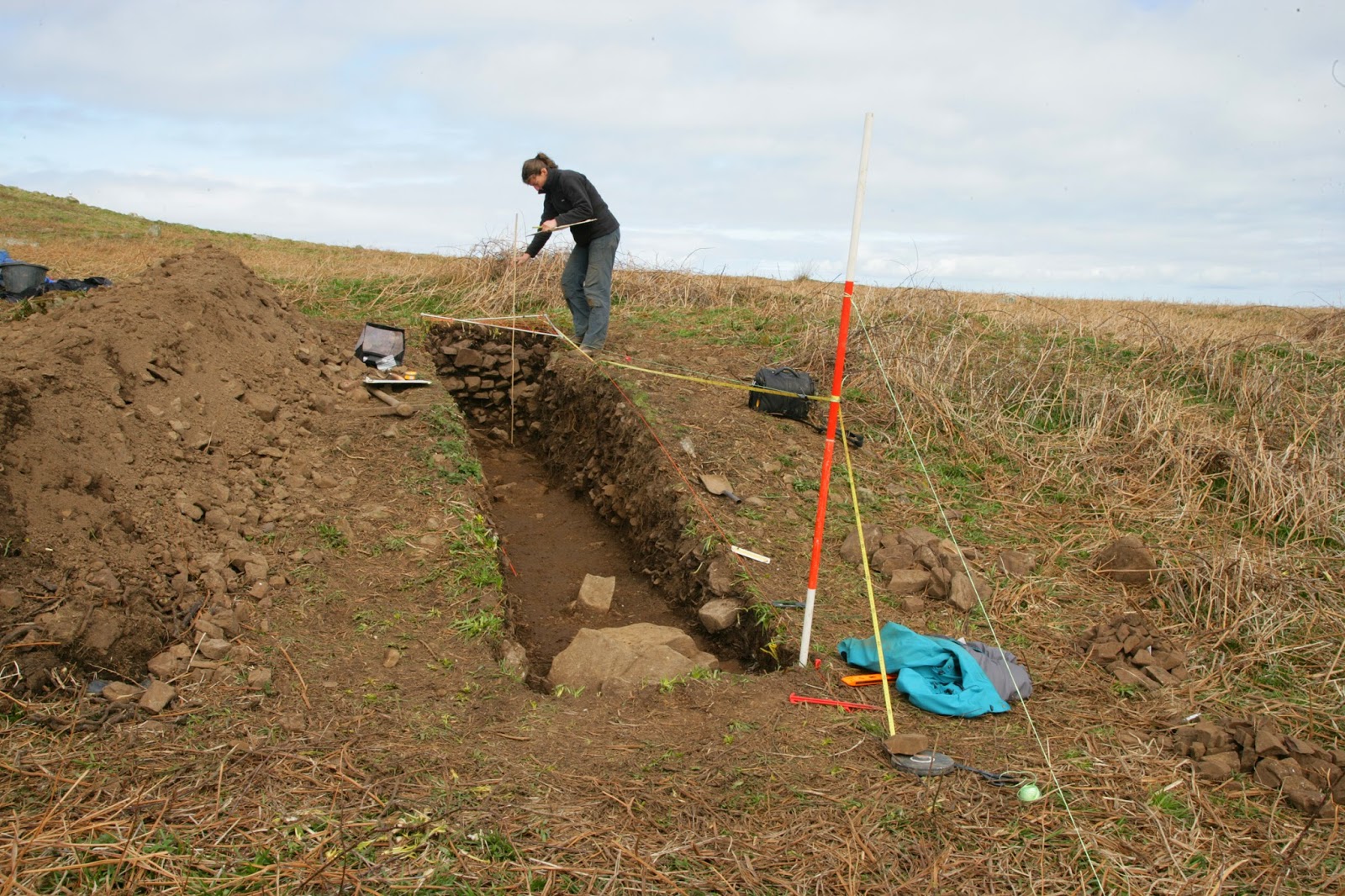Croeso i’r rhifyn diweddaraf o Fwletin Archifau a Llyfrgell Cofnod Henebion Cenedlaethol Cymru (CHCC)
http://www.cbhc.gov.uk/HI/CYM/Ein+Gwasanaethau/Rhoi+Cofnodion/Derbyniadau+Diweddar/.
Gellir gweld yr eitemau archifol a’r llyfrau llyfrgell ac erthyglau o
gylchgronau yn ein hystafell ddarllen gyhoeddus. Gellir gweld y deunydd
archifol ar Coflein hefyd yn
www.coflein.gov.uk
Rydym ar agor i’r cyhoedd ar yr adegau canlynol:
Dydd Llun – Dydd Gwener 09.30 – 16.00, Dydd Mercher 10.30 – 16.30.
Fe’ch cynghorir i wneud apwyntiad.
Medi ~ September 2014
Archif ~ Archives
Christopher J. Williams Mines Photographs: Cat Ref CJW
A further 100 slides loaned by Christopher Williams have been catalogued in advance of digitisation.
Metal Links Project Collection: Cat Ref MLPC
And
Welsh Mines Preservation Trust: Cat. Ref WMPT
Cataloguing of this collection has been completed this month
135 b/w prints of various sites have been catalogued and added to the site files. These date from 1960’s – 1980’s and were mounted ready to be added to the site files.
Investigators' Digital Photography – Collection
Sites include:
- Fort Belan
- Caernafon – Slate Quay & Victoria Dock
- Aberdovey Streets
- Fishguard Town & Harbours
- Felin Wen Tide Mill
 |
| Tywyn War Memorial Hospital DS2014_350_002 |
- Tywyn War Memorial Hospital
- Hen Gapel, Rhydowen
 |
| Hen Gapel, Rhydowen DS2014_288_011 |
- Morfa Copperworks Laboratory
 |
| Morfa Copperworks Laboratory DS2014_332_001 |
- The collapsed Aberystwyth Seafront Shelter and foundations of Marine Baths
 |
| Foundations of Marine Baths DS2014_001_030 |
- Photo survey of excavations on Skomer
Llyfrau ~ Books
Aaron, John, 1992.
Torf Ardderchog: Teithiau Cristnogol Trwy Gymru: Cyfrol 1 - Ceredigion A Phenfro, Gwasg Efengylaidd Cymru, Ganol.
Archaeology Ireland Heritage Guides set (incomplete); kept together in one box in the Library.
Cadwaladr Tawelfryn Thomas and Edward, 1904.
Hanes Ymdaith Cynnulleidfaoliaeth, Argraffwyd Gan Y "Western Mail", Caerdydd.
Coad, Jonathan, 2013.
Support for the Fleet: Architecture and Engineering of the Royal Navy's Bases 1700-1914, English Heritage, Swindon.
Compton-Dando, Norman C., 1977.
Presbyterian Church of Wales: The Gwent Presbytery: Year Book 1977, Pen-Y-Cae Press, Ebbw Vale.
Cowan, D.D., 1910.
The Landmarks of Church History: Guild Library, A&C. Black, London.
Cowman, Des, 2006.
The Making and Breaking of a Mining Community: The Copper Coast, County Waterford 1825-1875+, Mining Heritage Trust of Ireland, Waterford.
Davies, E.T., 1981.
Religion and Society in the Nineteenth Century: A New History of Wales, Christopher Davies Ltd, Dyfed.
Edwards, Huw, 2009.
Capeli Llanelli: Our Rich Heritage, Carmarthenshire County Council, Carmarthenshire.
Evans, E. Lewis, 1969.
Eglwys Hope Pontarddulais, Abertawe, Gwasg John Penry.
Evans, T., 1997.
Tri Chanmlwyddiant Eglwys Annibynnol Henllan: 1697 – 1997, Argraffwyd Gan E.L. Jones A'i Fab, Aberteifi.
Francis, Sam, 1994.
Hanes Capel yr Onllwyn, Argraffwyd gan Wasg Morgannwg, Castell-Nedd.
Grant, Michael, 2005.
The Rise of the Greeks, Phoenix Press, London.
Gregory, Donald, 1991.
Country Churchyards in Wales, Gwasg Carreg Gwalch, Gwynedd.
Gregory, Donald, 1994.
Radnorshire: A Historical Guide, Gwasg Carreg Gwalch, Gwynedd.
Gregory, Donald, 1989.
Yesterday in Village Church and Churchyard, Gomer Press, Llandysul.
Jenkins, Gwyn, 2014.
Cymry'r Rhyfel Byd Cyntaf, Y Lolfa, Talybont.
Jones, Peter, 1969.
Recording Wales 2: Chapels: An Exhibition Of Pictures, Commissioned by the Welsh Arts Council, Welsh Arts Council.
O'Kelly, Michael J., 1954. Excavations and Experiments in Ancient Irish Cooking-Places, off-print from
The Journal Of Royal Society Of Antiquaries Of Ireland, Vol:LXXXIV, Part II.
Raistrick, Arthur, 1950.
Quakers in Science and Industry: Being an Account of the Quaker Contributions to Science and Industry during the 17th and 18th Centuries, Bannisdale Press, London.
Rees, B., 1899.
Hanes Blaenywuan, Argraffwyd Gan W. Williams, Llandudoch.
Spencer, Ray, 1991.
A Guide to the Saints of Wales and the West Country, Llanerch Enterprises, Somerset.
The Times, 2014,
Britain from Above: A View of Britain from the Past to Present, The Times/HarperCollins, Glasgow.
Thomas, Gwyn, 2012.
Gair yn ei Le: 50 O Lefydd Llenyddol, Y Lolfa, Talybont.
Whittingham, Sarah, 2011.
Sir George Oatley: Architect of Bristol, Redcliffe Press, Bristol.
Williams, Glanmor, 1950.
Samuel Roberts Llanbrynmair, University Of Wales Press, Cardiff.
Wills, Anthony and Phillips, Tim, 2014.
British Seaside Piers, English Heritage, Swindon.
Cyfnodolion ~ Journals
Antiquity vol. 88 no. 341 (September 2014)
Archive (Journal of British Industrial and Transport History) no. 83 (September 2014)
Below! Quarterly Journal of the Shropshire Caving & Mining Club no. 2014:3
Cartographic Journal vol. 51 no. 3 (August 2014)
Cartographiti no. 92 (Summer 2014)
Casemate no. 101 (September 2014)
Current Archaeology no. 295 (October 2014)
The Georgian (1/2014)
The Georgian Group Journal vol. 22 (2014)
The Gower Society Newsletter (Autumn 2014)
Historic Monuments Council (Northern Ireland) Report no. 2 (2009-2012)
Maplines vol. 21 issue 2 (Summer 2014)
Monmouthshire Antiquary vol. 30 (2014)
Pembrokeshire Life (September 2014)
Proceedings of the Society of Antiquaries of Scotland, vol. 142 (2012)
Railway and Canal Historical Society Bulletin no. 451 (Sept-Oct 2014)
Welsh Railways Research Circle no. 140 (Autumn 2014)
Cyfnodolion electronig ~ Electronic journals
Association of Architecture Organizations Newsletter (September 2014)
Castle Studies Group Bulletin no. 18 (September 2014)
Mine d'Histoires no. 8 (September 2014)
NAMHO Newsletter no. 69 (September 2014)
Roman Rural Settlement Project Newsletter no. 4 (Autumn 2014)
Cylchgronau Gwasanaeth Ymwybyddiaeth Gyfredol ~
Journals Current Awareness
Current Archaeology no. 295, p. 6: ‘Neolithic conflict at Caerau’ [CAER project, Oliver Davis is project co-director]
The Georgian, p. 51, Campaigning section: ‘A future for Welsh villas’ mentions Plas Brereton and Plas Ty Coch near Caernarfon, and Tan-yr-allt in Bangor
Castle Studies Group Bulletin no. 18: ‘Pembroke Castle: Discoveries in the Outer Ward’ by Neil Ludlow and Toby Driver
Os oes gennych unrhyw sylwadau neu ymholiadau, mae croeso i chi gysylltu â ni:
Gwasanaeth Llyfrgell ac Ymholiadau CHCC
Comisiwn Brenhinol Henebion Cymru
Adeilad y Goron, Plas Crug
Aberystwyth
Ceredigion, SY23 1NJ
Ffôn: +44 (0)1970 621200
Ffacs: +44 (0)1970 627701
E-bost:
chc.cymru@cbhc.gov.uk
Gwefan:
www.cbhc.gov.uk
Blog:
www.newyddiontreftadaethcymru.blogspot.co.uk
Tanysgrifiwch i Newyddion Treftadaeth Cymru a chofrestrwch ar gyfer yr RSS porthiant llawn: cliciwch y botwm RSS hwn

a
thanysgrifiwch!
Rydym hefyd ar gael ar:



Twitter Hashtag: #RCAHMWales



 a thanysgrifiwch!
a thanysgrifiwch!















